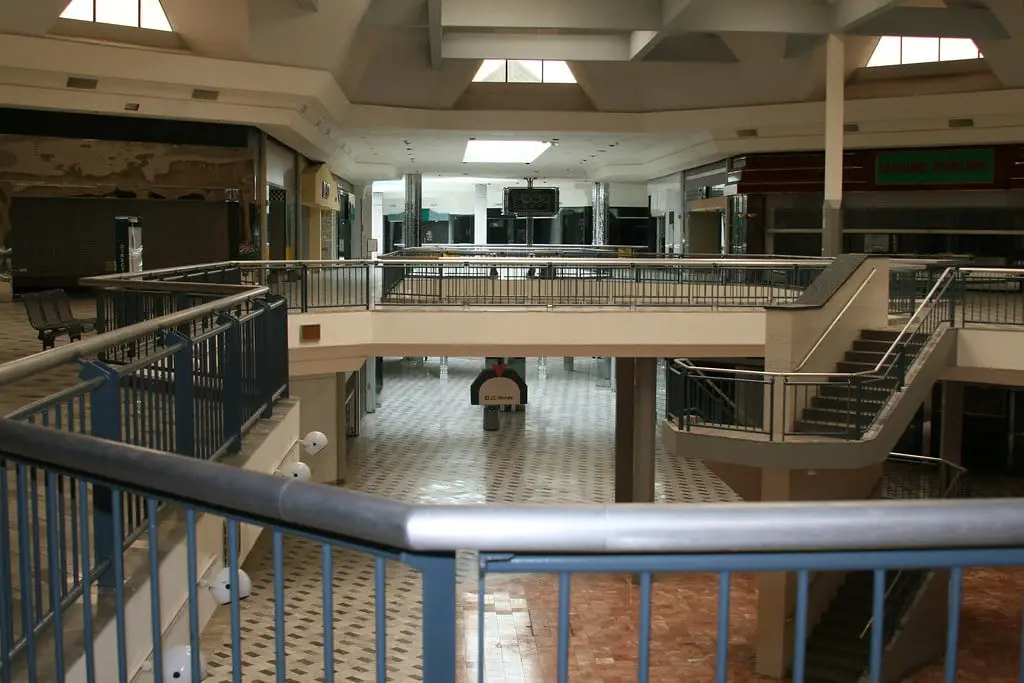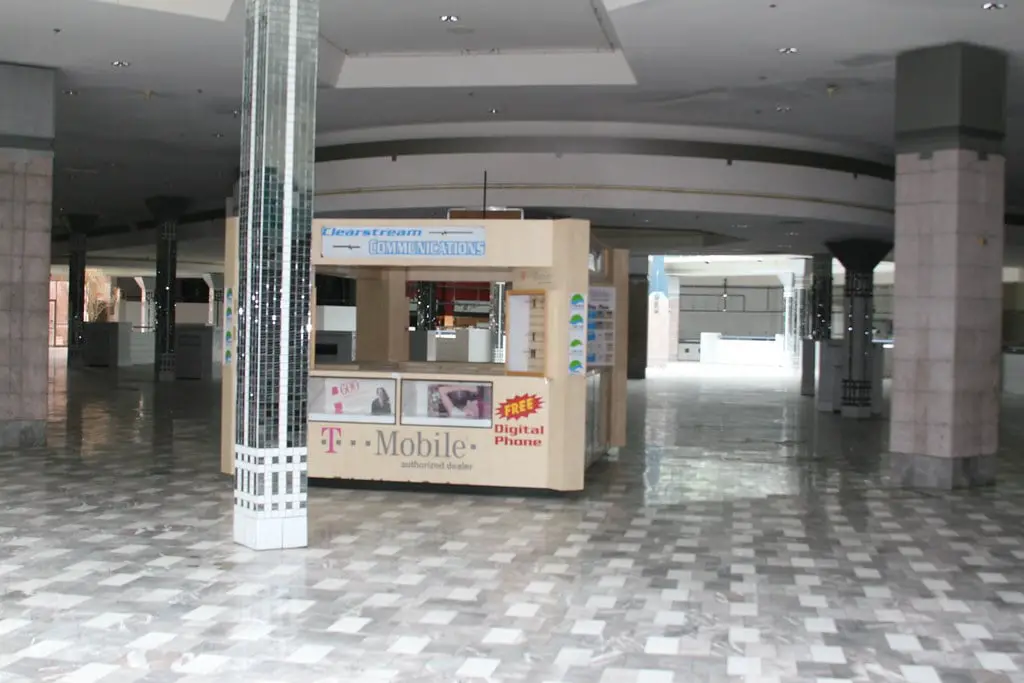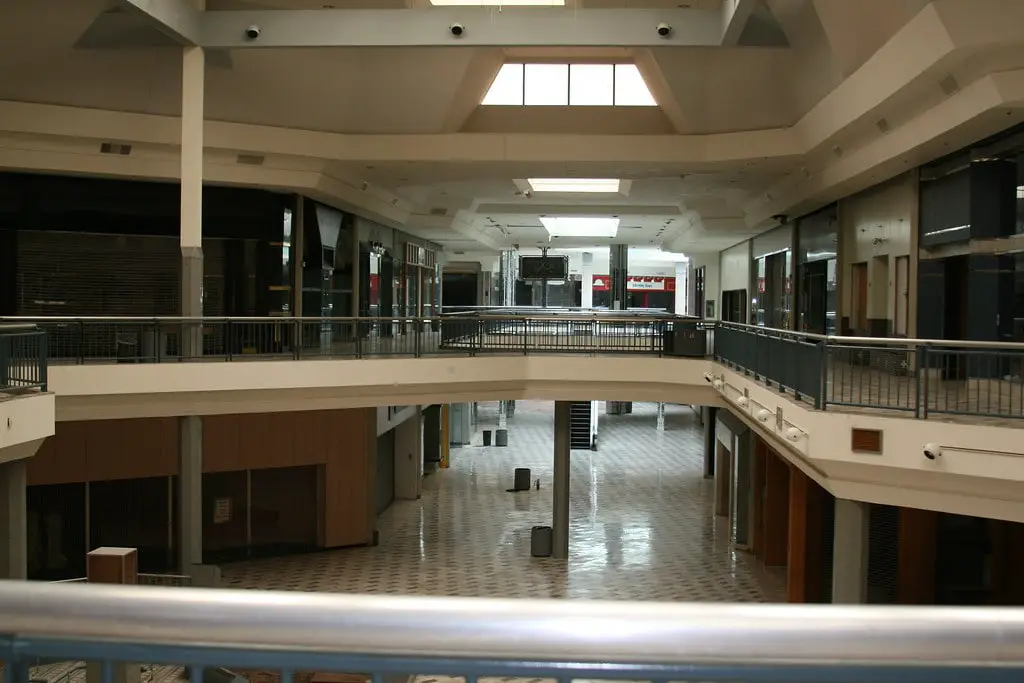A Bustling Beginnings
It was 1976 when Windsor Park Mall opened its doors to the public. The Windsor Park Mall, an ambitious venture by Melvin Simon and Associates, was nestled on the northeast side of San Antonio, Texas, just off Interstate 35 and Walzem Road.
The blueprint for the mall was unveiled in 1974, and by July 29, 1976, the mall doors opened to the public. It was anchored by retail giants like Montgomery Ward, JCPenney, Joske’s, and Dillard’s, rapidly becoming a favorite destination for local shoppers.
Flourishing Times and Expansion
The mall did not rest on its initial success. A 1985 expansion added Mervyns to its list of anchor stores. In 1987, Joske’s merged with Dillard’s, transforming the former Joske’s space.
The lower level was converted into a Dillard’s home store, and the upper level was transformed into a food court, a project costing $8 million ($20.6 million in 2022 dollars). Another significant development marked this period: Rolling Oaks Mall’s opening in 1988.
Simon renovated Windsor Park concurrently with the new mall from 1987 to November 1990. At this time, Windsor Park boasted 135 tenants and a 97% occupancy rate, reflecting its prime status in the community.
Crime and Decline
However, the 1990s brought about a significant change in the mall’s fortunes. As the demographics of the neighborhood surrounding Windsor Park Mall started to shift, the mall began grappling with a rising crime tide. Several incidents, including a fatal stabbing and a shooting, increased safety concerns.
The mall’s popularity began to wane as the crime and safety issues took their toll on Windsor Park’s success. By 2001, the mall was considering the option of becoming a small business incubator, reflecting the struggles it was facing.

The End of an Era
The national closure of Montgomery Ward in 2001 marked the beginning of the end for Windsor Park as a shopping mall. Dillard’s followed suit and closed in January 2002.
The mall’s occupancy rate descended to a mere 45%, leading Simon to sell the property to Whichard Real Estate of North Carolina. The tenant roster began to deviate from the norm, accommodating government agencies, social organizations, churches, and even a nightclub and a “bazaar” flea market.
The mall entered its twilight days when JCPenney closed its doors in 2004, followed by Mervyn’s, the final anchor, which shuttered on August 31, 2005, signaling the end of its era.

A Beacon of Hope in a Crisis
In 2005, the vacant Montgomery Ward became a shelter for hurricane victims. The owner of the building, Graham Weston, the chairman and co-founder of Rackspace, used it to shelter 3,300 victims of Hurricane Katrina and some 3,000 refugees of Hurricane Rita. This act of charity marked a transition for the mall from a declining shopping center to a place of refuge.
The Castle: A New Chapter
The transition of Windsor Park Mall from a bustling shopping destination to a deserted structure could have been the end of its story. But fate had other plans. The once vibrant hub was about to embark on a new journey, not as a shopping center, but as a home to one of the tech world’s most innovative companies, Rackspace.
Rackspace, a web hosting company, was expanding rapidly and desperately needed more space. Their solution? Windsor Park Mall. The mall provided an ample area for the company to grow, and in 2007, Rackspace purchased the mall for a whopping $27 million.

This acquisition didn’t just change the destiny of the mall, but it also led to a significant alteration in the city boundaries of San Antonio. Two hundred twenty-one acres of land, including the mall, was transferred to the suburb of Windcrest.
The transformation was not just physical but symbolic too. The mall, once known for its bustling shopping environment, was now called “The Castle.” This name reflected its new role as a fortress of technology and innovation.
But the transformation didn’t stop at the mall’s doors. Once deserted and forgotten, the surrounding area started to buzz with life again. Rackspace’s venture sparked a surge of redevelopment in the vicinity, marking the beginning of a new chapter.

Conclusion
The story of Windsor Park Mall reflects the changing times and the adaptability of infrastructure. What was once a bustling shopping center is now a thriving tech hub, demonstrating the community’s resilience and the transformative power of innovative thinking.
